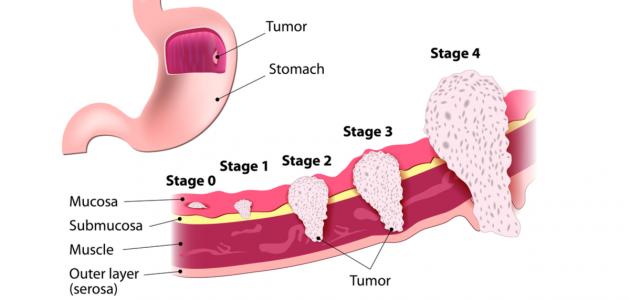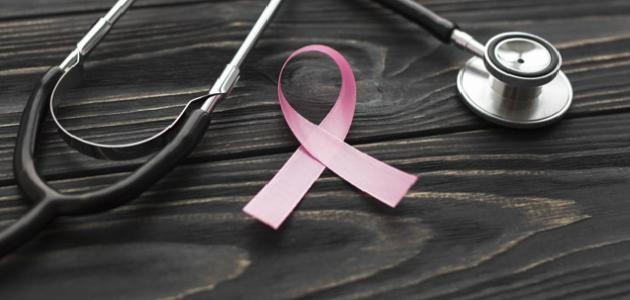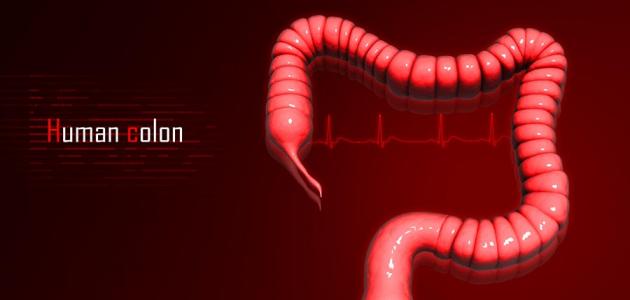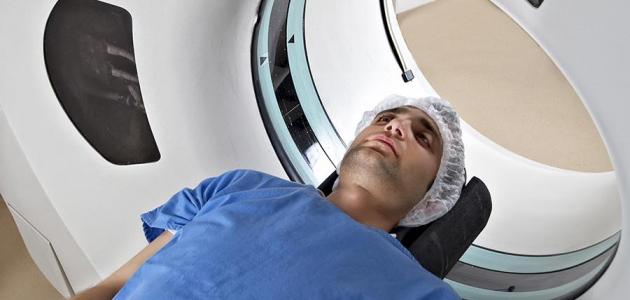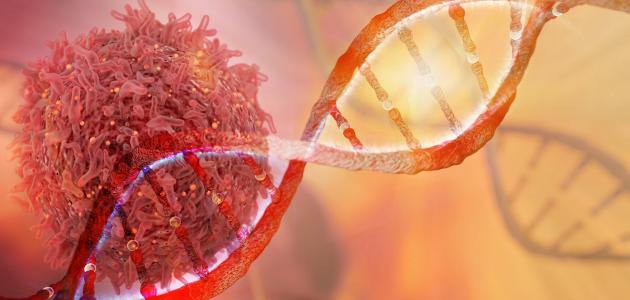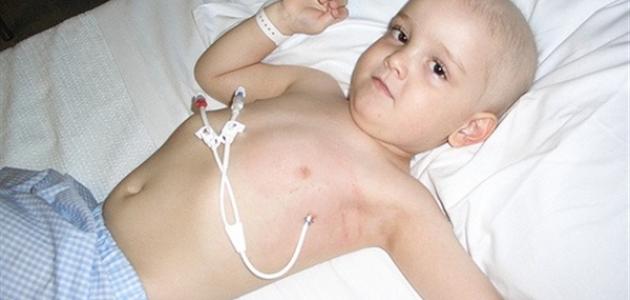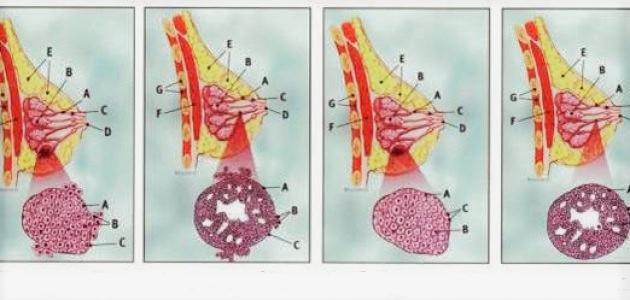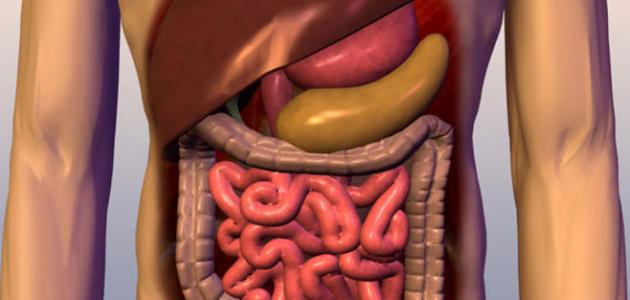Contents
An overview of stomach cancer
Stomach cancer or gastric cancer is defined as a type of cancer that usually begins from the inner lining of the stomach, spreads to deeper levels over time, and may extend to neighboring organs such as the liver, And the pancreas , and others, which is one of the most common types of cancer worldwide, [1]The stomach is located on the left side of the upper part of the abdomen, and it is a muscular sac that receives food from the esophagus , through the gastroesophageal junction, which forms the meeting point of the esophagus and the stomach, and the stomach secretes many important enzymes and hormones For the digestion process, and it is worth noting that the stomach is divided into five parts, we separate them according to their location from top to bottom, that is, starting from the part adjacent to the esophagus and ending with the part adjacent to the small intestine: [2] [3]
- Cardiac opening , which is the part closest to the esophagus.
- The fundus , which forms the upper part of the stomach.
- The stomach body: (Corpus), which is the main part of the stomach.
- Laurel: , which forms the lower part of the stomach, and in which food is mixed with gastric juice.
- Door: , which is a valve that controls the emptying of food from the stomach into the small intestine.
The stomach also consists of several layers, where the mucosa forms the first and inner layer of the stomach, which secretes acids and enzymes, and most cases of stomach cancer appear in it first, then it is followed by the submucosal layer , then the muscle layer . Muscularis propria), which move in order to mix the contents of the stomach, then the sub-serous layer , and finally the serosa layer , as these two layers envelop the stomach wall, and it is worth noting that stomach cancer is more severe the more it is transmitted To the deeper layers of it, [3] and it should be noted that stomach cancer ranks sixth in terms of prevalence compared to other types of cancers, according to the reports of the World Health Organization and WHO acronym for the year 2018. [4]
Types of stomach cancer
Types of stomach cancer include:
- Adenocarcinoma: is adenocarcinoma more types of stomach cancers prevalent in 90%, which is a cancer that begins to appear in the mucous layer of the stomach specifically from the epithelium or epithelial . [5]
- Gastric lymphoma, which is cancer that affects the immune system tissues in the stomach.
- Tumor Alsdoa gastrointestinal: and Acronym GIST, this tumor appears in the smooth muscle tissue of the stomach, specifically in the cells called cells of Cajal interstitial , this might be The tumor is benign or malignant.
- Tumor carcinoid: , very rare tumors and slow evolution that begins in the cells of the nervous system , and the device [[Ma_ha_algdd_alsme | endocrine].
Symptoms of stomach cancer
It may develop stomach cancer without causing any offer significantly more often, especially in the early stages of infection, and with the progress of cancer and access to the stages of late increases the severity of symptoms suffered by the patient, and include the signs and symptoms that appear in the initial stages of stomach cancer as follows: [ 6]
- Indigestion, heartburn , and stomach discomfort.
- Loss of appetite .
- Fatigue and nausea.
- Blood in stools or black stools.
- Feeling bloated even after eating small meals.
- Vomiting after meals.
- Lose weight.
- Feeling of stomach pain, especially after eating.
- Weakness and fatigue.
It should be noted that some diseases and other health problems may cause similar symptoms repeatedly, and thus their appearance does not definitely mean stomach cancer. In the event that these symptoms appear, worsen, or when they differ, it should also be noted that if these symptoms are associated with the presence of cancer in its early stages, this greatly increases the chance of recovery from it. [7]
To learn more about stomach cancer symptoms, read the following article: ( stomach cancer symptoms ) .
Stages of stomach cancer
Knowing the stage of stomach cancer helps in choosing the most appropriate treatment for the patient, and the following is a detail of the stages of stomach cancer: [8]
- The first stage: the presence of cancer is limited at this stage on the first layer of the fabric of the envelope of the esophagus or stomach with a possibility of spread to some lymph nodes only nearby.
- Stage II: Cancer deepens in this stage, reaching the muscle tissue of the stomach wall, or esophagus, with the possibility of reaching more lymph nodes.
- Stage III: The cancer at this stage has spread to all layers of the esophagus or stomach, and has affected some neighboring tissues, or it may be a small cancer, but its spread in the lymph nodes has become wider and larger.
- Stage IV: In this stage, cancer has reached other areas further away in the body.
Causes of stomach cancer
No clear and specific cause has been identified for the onset of the growth of cancer cells in the stomach, but there are many risk factors that increase the incidence of it, and it is worth noting that these factors do not directly cause stomach cancer, but only may raise the possibility of infection as mentioned previously; Some people may develop cancer without the presence of any of the risk factors that we will mention to them, while others may not develop cancer despite the availability of several risk factors for them, but knowing the risk factors that increase the chance of stomach cancer and avoid it greatly contributes to reducing the possibility of infection These factors include the following: [9] [10] [11]
- Age: the incidence of stomach cancer increases in people over the age of 55; As most of the injured are in their sixties or seventies.
- Gender: Men are twice as likely to develop stomach cancer as women.
- Infection: MRSA associated with Helicobacter pylori or germ stomach injury stomach cancer, as well as caused by a lot of infections and stomach ulcers.
- Family history: This is related to the presence of certain genetic diseases, or the infection of a family member, such as a parent, children, or siblings, with stomach cancer.
- Ethnicity: The incidence of stomach cancer is higher for people with black skin, Hispanics, Asians, and especially the Japanese.
- Diet: Stomach cancer is associated with foods that contain a large amount of salt as well as smoked foods.
- Smoking and drinking alcohol.
- Obesity.
- Undergoing previous surgeries or having certain health conditions such as: stomach surgery, pernicious anemia, or stomach acid deficiency, [10] and when talking about stomach valve cancer, it is most associated with gastro-esophageal reflux disease , which is Stomach acid reflux into the esophagus. [12]
To learn more about the causes of stomach cancer, read the following article: ( Causes of stomach cancer ) .
Diagnosing stomach cancer
There are many tests that can be performed to diagnose stomach cancer, and we mention the following:
- Physical examination and history: the doctor searches for any signs indicating the presence of cancer such as abnormal masses, and examining the history of the disease is important, as this includes reviewing the patient’s health habits, diseases, and previous treatments that he underwent .
- Blood tests Chemistry: are through these tests to detect the amount of certain substances in the blood produced by organs and tissues of the body, for example , are examined CEA , which is produced in larger quantities of cells Carcinogenicity in at least half of people with stomach cancer. [13] [14]
- Barium swallow imaging test: or upper GI series examination, the patient drinks a liquid containing barium before undergoing this examination. As this fluid coats the esophagus and stomach to reveal the presence of any abnormal areas when imaged with the help of X-ray imaging.
- Upper endoscopy: , the doctor used in this test tube a long and flexible, with a camera and a small lighting; Where the doctor enters it through the mouth to examine the lining of the esophagus, stomach, and the first part of the small intestine, and in the event that any abnormal parts are noticed, the doctor may take biopsies from them to examine them in the laboratory. [15]
- Computed tomography: (CT scan), or as it is called, computerized tomography. In it, detailed cross-sectional images are taken of the soft tissues in the body, as these images are clearly prepared through which the site of cancer can be determined, and a CT scan can help determine the stage of cancer, and whether surgery may be a good treatment option or not. [15]
- Biopsy: , a sample of stomach tissue or cells is taken and examined under a microscope to check for any sign of cancer, and this examination is usually done when undergoing an endoscopy, and it is worth noting that biopsy is the only examination that can be used Definitely the presence of the cancer is generally clear, and the doctor may perform other tests to help make the diagnosis if a biopsy is not possible. [13] [16]
In addition to diagnosing cancer , doctors may order many other tests to verify that it has spread to other areas of the body other than the one from which it started, which is then called the migration of cancerous cells, metastases, or metastases, [16] and includes the tests that the doctor requests. When confirming the presence of stomach cancer to help determine the size of the cancer and the extent of its spread, and thus determining the appropriate treatment for it, the following: [17]
- Ultrasound scan.
- CT scan.
- Positron emission tomography (PET-CT scan).
- Laparoscopy or laparoscopy.
To learn more about stomach cancer diagnosis, read the following article: ( Diagnosing stomach cancer ) .
Stomach cancer treatment
Treatment for stomach cancer, as previously mentioned, depends on its stage as well as the patient's general health and preferences, [8] and treatment options generally include surgery, chemotherapy, and radiation therapy, in addition to drug treatments. [18]
Surgical excision
The primary goal of surgery is to remove the entire existing cancer, as well as a portion of the surrounding healthy tissue, and the options for surgery vary. As the doctor may remove cancer cells only if the cancer is small, and in its initial stages through endoscopy, and if the cancer is larger, it may have to remove the affected part of the stomach, i.e. partial gastrectomy , or the doctor may resort to removing The whole stomach and some adjacent tissues in what is known as a total gastrectomy, and then the esophagus is attached to the small intestine , and in other cases, the lymph nodes near the stomach may be eliminated, and the goal of surgery is in advanced stages of stomach cancer that cannot be treated with surgery Only alleviate the symptoms associated with it. [8]
Radiation therapy
Radiation therapy is used in advanced cases to alleviate the symptoms that the patient suffers from, and the principle of radiotherapy work depends on targeting the rays used for cancer cells and killing them, and it is not commonly used in the treatment of stomach cancer, for fear of damaging neighboring organs. From chemotherapy and / or radiotherapy before undergoing surgery to help reduce the size of the existing cancer and facilitate its removal by surgery, or it may be resorted to after the excision surgery; To ensure that the remaining cancer cells are killed after their procedure. [18]
chemotherapy
Chemotherapy depends on receiving anti-cancer drugs that destroy cancer cells, and chemotherapy may be resorted to before surgery to reduce the size of cancer to make it easier for the surgeon to remove it, or afterwards to reduce the risk of cancer cells reappearing, and chemotherapy is given either by intravenous or via the central venous line; That is, through the large veins in the body in the arm or chest, and it is worth noting that chemotherapy causes a variety of side effects, such as: feeling sick and getting very tired, loss of appetite, weight loss, hair loss, diarrhea or constipation. [19]
Targeted drugs
Targeted medications work in principle to identify cancer cells and start attacking them without harming healthy cells, such as antibodies.Monoclonal antibodies, which are manufactured in laboratories depending on one type of immune cells, and these antibodies are distinguished by their ability to distinguish specific substances that appear on cancer cells or natural substances that help cancer cells to grow and then attach to these substances with the aim of killing cells Carcinogenicity or preventing it from spreading and growing, and examples of this type of medicine are two drugs that are given by injection into a vein, namely trastuzumab and ramucirumab , both of which are used in stage IV stomach cancer, which cannot be eliminated by surgery Or in the event of recurrent stomach cancer, while the second class of targeted drugs includes multiple kinase inhibitors whose principle of action is to penetrate the cell membrane and inhibit specific proteins that a cancer cell needs from dividing and growing, such as the drug Regorafenib, which has been studied to treat stomach cancer in the fourth stage that cannot be eliminated by surgery or in the event of recurrence of infection with it.[13] It should be noted that this type of medication is usually used in conjunction with chemotherapy. [8]
Immunotherapy
Immunotherapy or what is called biologic therapy uses materials that are manufactured inside the body or in laboratories to in turn stimulate and direct the body’s immunity and restore the body’s natural defenses against cancer cells, an option that is usually resorted to. In advanced cases of cancer in those who have had two or more treatments previously, such as the Immune checkpoint inhibitor. [18] [13]
References
- ↑ Cleveland Clinic medical professional (2-17-2019), "Stomach Cancer" , my.clevelandclinic.org , Retrieved 2019-12-17. Edited.
- ↑ "Picture of the Stomach" , www.webmd.com , Retrieved 12-30-2019. Edited.
- ^ A b The the American Cancer Society Medical And the content Editorial team 's (2017-12-14), "What ' Is Stomach Cancer?" , Www.cancer.org , Retrieved 2019-12-17. Edited.
- ↑ "Cancer" , www.who.int , 2018-9-12, Retrieved 2019-12-20. Edited.
- ↑ "Stomach Cancer Types" , Stanfordhealthcare.org , Retrieved 2019-12-20. Edited.
- ↑ familydoctor.org editorial staff (2018-10-11), "Stomach Cancer" , familydoctor.org , Retrieved 2019-12-20. Edited.
- ↑ "Symptoms -Stomach cancer" , www.nhs.uk , 2019-10-21, Retrieved 2019-12-20. Edited.
- ^ A b T w Mayo , Clinic Staff (2018-5-19), "Stomach Cancer" , Www.mayoclinic.org , Retrieved 2019-12-23. Edited.
- ↑ "Stomach Cancer" , www.webmd.com , 2017-7-18, Retrieved 2019-12-20. Edited.
- ^ A b "Stomach Cancer: Risk Factors" , Www.cancer.net , 2019-1, Retrieved 2019-12-20. Edited.
- ↑ "Why does Japan have a high incidence of gastric cancer? Comparison of gastritis between UK and Japanese patients" , www.ncbi.nlm.nih.gov , Retrieved 2019-12-20. Edited.
- ↑ Mayo Clinic Staff (5-19 2018), “Stomach cancer , ” www.mayoclinic.org , Retrieved 2019-12-20. Edited.
- ^ A b t w "Gastric Cancer Treatment (PDQ®) -Patient . Version" , Www.cancer.gov , 2019-6-5, Retrieved 2019-12-24. Edited.
- ↑ "Stomach cancer" , www.betterhealth.vic.gov.au , 2016-11, Retrieved 2019-12-22. Edited.
- ^ A b "Tests For Stomach Cancer" , Www.cancer.org , Retrieved 22-12-2019.
- ^ A b Cancer.Net Editorial Board (2019-1), "Stomach Cancer: Diagnosis" , Www.cancer.net , Retrieved 2019-12-22. Edited.
- ↑ "Tests and next steps -Stomach cancer" , www.nhs.uk , 2019-10-21, Retrieved 2019-12-22. Edited.
- ^ A b T , Adam Felman (2019-9-2), "What ' To Know About Cancer of stomach" , www.medicalnewstoday.com The , Retrieved 2019-12-23. Edited.
- ↑ "Chemotherapy treatment" , www.cancerresearchuk.org , Retrieved 12-30-2019. Edited.
